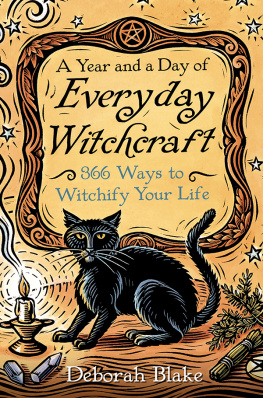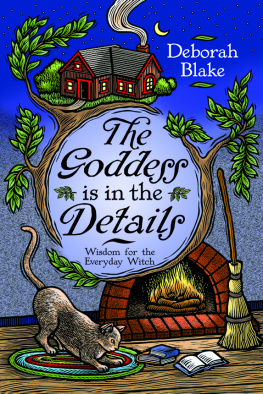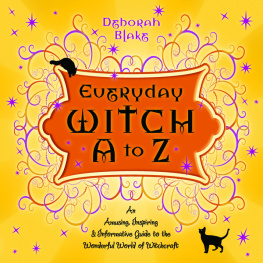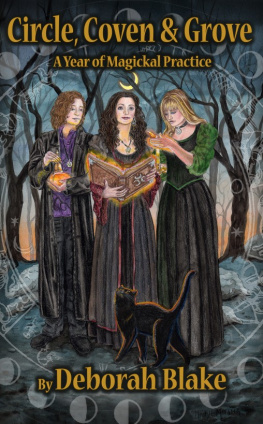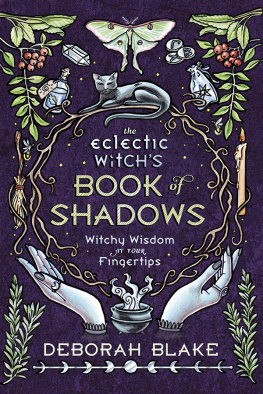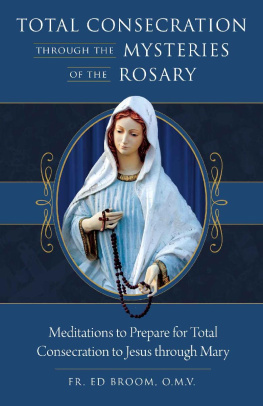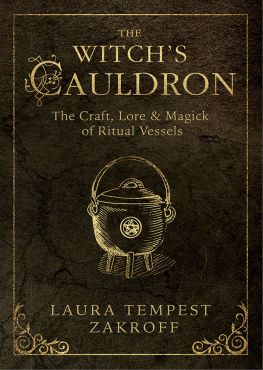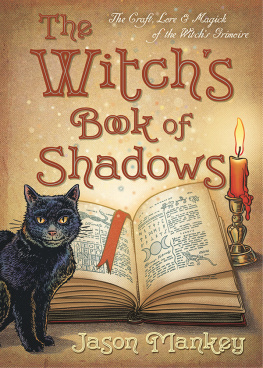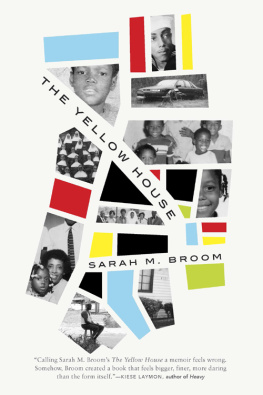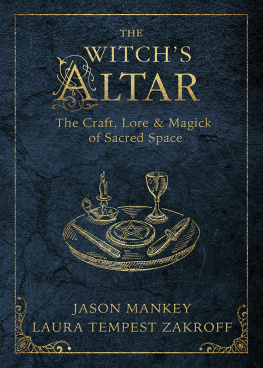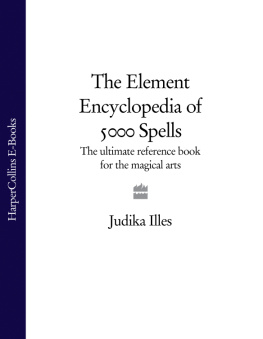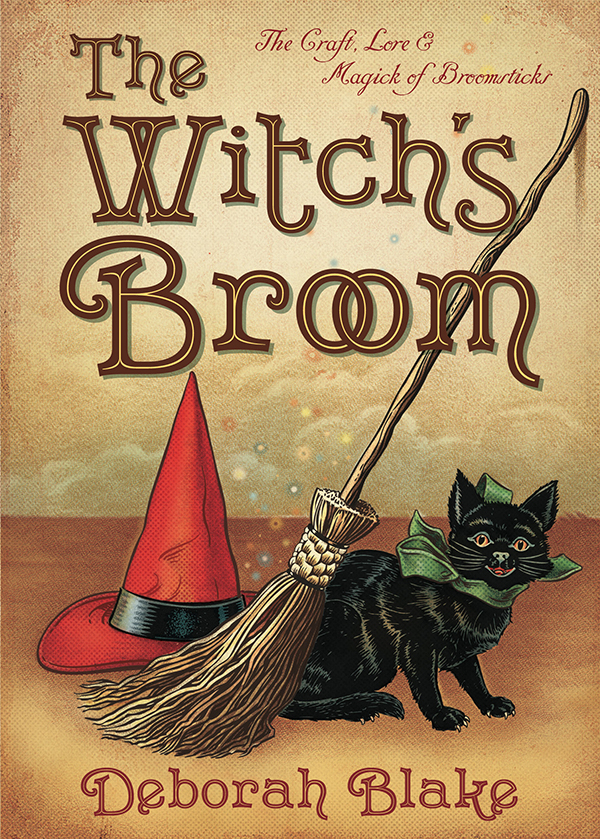Deborah Blake has published numerous articles in Pagan publications, including Llewellyn annuals, and has an ongoing column in Witches & Pagans magazine . Her award-winning short story, Dead and (Mostly) Gone, is included in the Pagan Anthology of Short Fiction: 13 Prize Winning Tales (Llewellyn, 2008). This is her seventh book published by Llewellyn. She has been interviewed on television, radio, and podcast, and can be found online on Facebook, Twitter, and deborahblakeauthor.com. When not writing, Deborah runs the Artisans Guild, a cooperative shop she founded with a friend in 1999, and also works as a jewelry maker. She lives in a 120-year-old farmhouse in rural upstate New York with five cats who supervise all her activities, both magickal and mundane.
Llewellyn Publications
Woodbury, Minnesota
Copyright Information
The Witchs Broom: The Craft, Lore & Magick of Broomsticks 2014 by Deborah Blake.
All rights reserved. No part of this book may be used or reproduced in any matter whatsoever, including Internet usage, without written permission from Llewellyn Publications, except in the form of brief quotations embodied in critical articles and reviews.
As the purchaser of this e-book, you are granted the non-exclusive, non-transferable right to access and read the text of this e-book on screen. The text may not be otherwise reproduced, transmitted, downloaded, or recorded on any other storage device in any form or by any means.
Any unauthorized usage of the text without express written permission of the publisher is a violation of the authors copyright and is illegal and punishable by law.
First e-book edition 2014
E-book ISBN: 9780738739748
Book design by Rebecca Zins
Cover design by Lisa Novak
Cover illustration by John Kachik/Lindgren & Smith, Inc.
Interior illustrations by Mickie Mueller
Llewellyn Publications is an imprint of Llewellyn Worldwide Ltd.
Llewellyn Publications does not participate in, endorse, or have any authority or responsibility concerning private business arrangements between our authors and the public.
Any Internet references contained in this work are current at publication time, but the publisher cannot guarantee that a specific reference will continue or be maintained. Please refer to the publishers website for links to current author websites.
Llewellyn Publications
Llewellyn Worldwide Ltd.
2143 Wooddale Drive
Woodbury, MN 55125
www.llewellyn.com
Manufactured in the United States of America
for my grandmother ... who proved that love was the greatest magic of all.
Contents
: A Witch and Her Broom
: Brooms in History, Tradition, and Lore
: The Witchs Broom in Popular Culture
: Broom Basics
: A Broom of Your Own
: Fast and Easy Spells, Charms, Crafts, and More
: Specialty Brooms
: Brooms for Special Occasions
: Brooms in Ritual Use
: For the Young Witch
: A Broom for Every Witch
: Runes
introdu c tion
A Witch and Her Broom
If you ask most people to describe their idea of the typical witch, they will probably mention a tall pointy hat, long flowing robes or a dark cape, a bubbling cauldron, a black cat or twoand a broom. Whether the witch in question is the Wicked Witch of the West, with her long, crooked nose and green face, or the cheerful, blond Samantha from Bewitched , almost every one of them is shown with a broom.
Theres a reason for this. Brooms have been associated with witches and magick since the very beginning. Maybe this is because most early witches were women, and brooms were a womans tool. Maybe it is because there is something about the idea of flying that captures the imagination and excites the spirit.
Either way, youll rarely see a picture of a Halloween witch without her faithful broom, and where would Harry Potter have been without his Quidditch team, all of them zooming around on their brooms and chasing the elusive snitch? Brooms and witches go together in fiction, but they also go together in fact.
Todays modern witch may have a vacuum for her floors, but with any luck, she will also have a broom or two for magickal use as well. Traditionally, the broom is most widely used to sweep negativity out of a ritual circle before beginning a rite or as part of a Pagan handfasting (marriage) ceremony. But its usefulness goes far beyond these common basics.
Broomstick magick can be used for cleansing, protection, preventing nightmares, bringing in love, and sweeping away illness. If you believe in the old legends, it can even be used to make rain or get rid of unwanted guests! In truth, the broom is a much more versatile and useful tool than you ever might have suspected.
Some witches have only two brooms in their houses: one for mundane housecleaning and the other for magickal work. Others may have many, from small, decorative brooms hung in the kitchen or bedroom to larger ones dedicated to particular magickal tasks. They may buy a broom and customize it with anointing oils and decorations, or they may craft one from scratch using carefully chosen supplies that each serve a purpose.
broom lore
for protection, cross two brooms
and hang them on a wall
or nail them to a door
Whether you want to add a new facet to your magickal practice, make a unique gift for one of your witchy friends, or simply explore the role of brooms in Witchcraft past and present, I hope that this book will be both fun and educational.
Have a nice flight!
chapter
1

Brooms in History,
Tradition, and Lore
No one knows who invented the first broomprobably some poor woman whose Neanderthal husband dragged in a dead prehistoric bird, leaving a trail of feathers and blood all over her nice clean cave. Either way, bundles of twigs, plant stalks, and other natural fibers have been used since ancient times to sweep floors and hearths. Brooms were even mentioned in the Bible (although not in conjunction with witches).


